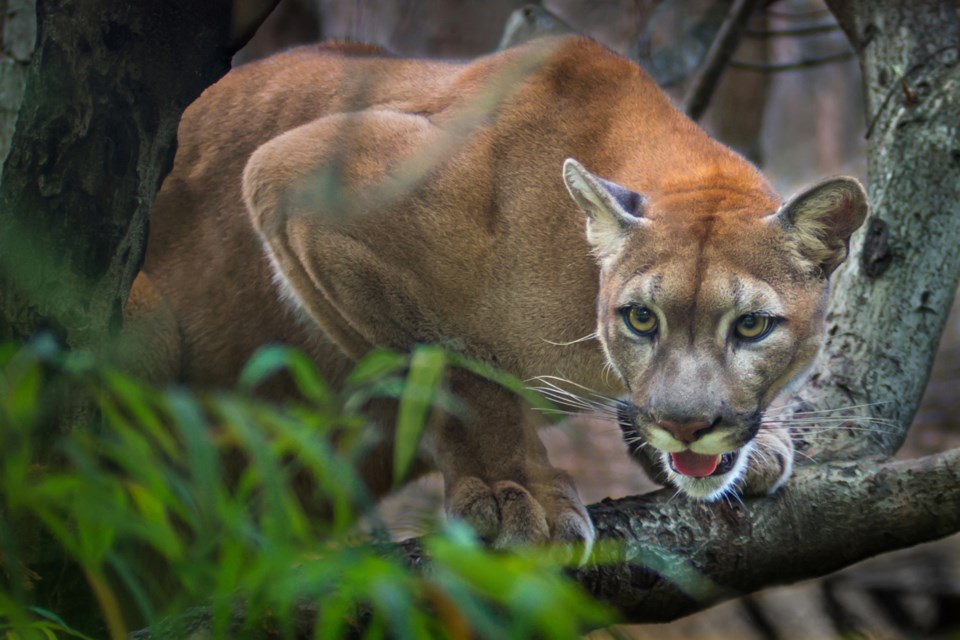It’s summer in Whistler—and that means cougars are on the prowl.
Not the après-ski variety referenced by local meme pages, but real mountain lions (Puma concolor), stalking prey in some of the Sea to Sky region’s most heavily used backcountry terrain.
Two cougar encounters in mid-June led to trail closures and a heightened public safety response from the BC Conservation Officer Service (COS), including armed escorts for hikers in Garibaldi Provincial Park.
The first reports came in on June 8 and 9, prompting a closure of the Rubble Creek trail to Garibaldi Lake, one of the most visited trails in the region. The closure remained in effect until June 17. The COS later confirmed the decision was made after two cougars reportedly exhibited stalking behaviour toward multiple hikers.
Despite attempts to scare the animals off—including shouting and throwing rocks—the cats did not retreat, an unusually bold response for a species typically wary of people.
Later that week, cougar activity was also reported on Whistler and Blackcomb mountains. On June 21 and 22, COS issued temporary closures for the Ascent Trail and parts of the Whistler Mountain Bike Park. Officials said the same cougars spotted in Garibaldi may have been involved, though the animals were not located.
Cougars by the numbers
Cougars, also known as mountain lions, pumas or panthers depending on the region, have the widest range of any land mammal in the Western Hemisphere apart from humans. According to the San Diego Zoo, they’re found from Northern B.C. all the way to Argentina.
Their home range can vary from 7,770 to 32,375 hectares—equivalent to roughly 10,800 to 45,300 international football fields. In British Columbia alone, the population is estimated between 5,000 and 7,000 animals, according to a 2024 report from the province.
Although cougars primarily prey on deer, they will also hunt elk, moose, and smaller mammals when the opportunity arises. Attacks on humans are rare.
WildSafeBC notes most cougar sightings do not result in aggressive encounters, but conflict increases in areas where the animals become habituated to human presence or where food sources, like deer, are abundant.
According to the BC Wildlife Federation, the last recorded cougar-related human fatality in B.C. occurred in the 1990s. However, more than 100 cougars are euthanized annually in the province due to conflict with humans or livestock.
The COS receives thousands of wildlife-related calls every year, and cougar sightings are more frequent during the summer months when trail traffic and deer movement both increase.
Despite warnings, some park users in Garibaldi reportedly ignored closure signage and continued hiking into areas of active cougar activity.
How to stay safe in cougar country
As the summer hiking and biking season ramps up, experts recommend extra caution when travelling through cougar habitat.
WildSafeBC offers the following guidance:
Don’t travel alone: Use the buddy system, especially at dawn or dusk when predators are most active;
Make noise: Talk or sing to avoid surprising wildlife;
Leash pets: Unattended pets may attract or provoke cougars;
Avoid headphones: They can reduce your awareness of your surroundings;
Carry bear spray: It is effective against cougars if used properly.
If you do encounter a cougar, remain calm and do not run.
Make yourself appear larger by raising your arms or jacket;
Speak firmly in a loud voice;
Pick up small children and keep them close;
Maintain eye contact and prepare to use bear spray;
If the animal approaches, stand your ground.
If a cougar attacks, do not play dead. Fight back using sticks, rocks, or anything at hand—aiming for the face and eyes.
Though they may inspire fear, cougars are a vital part of the forest ecosystem. Understanding their behaviour—and our own—can help avoid unnecessary conflict and protect both people and animals.




